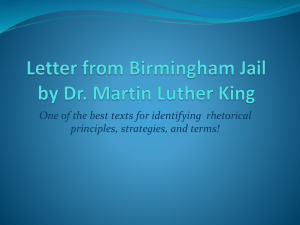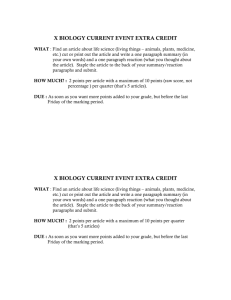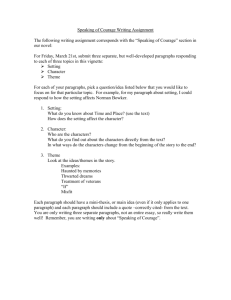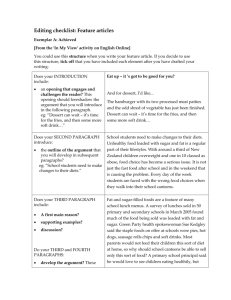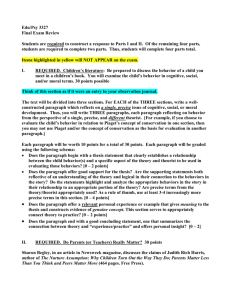Notes on “Letter from Birmingham Jail”
advertisement
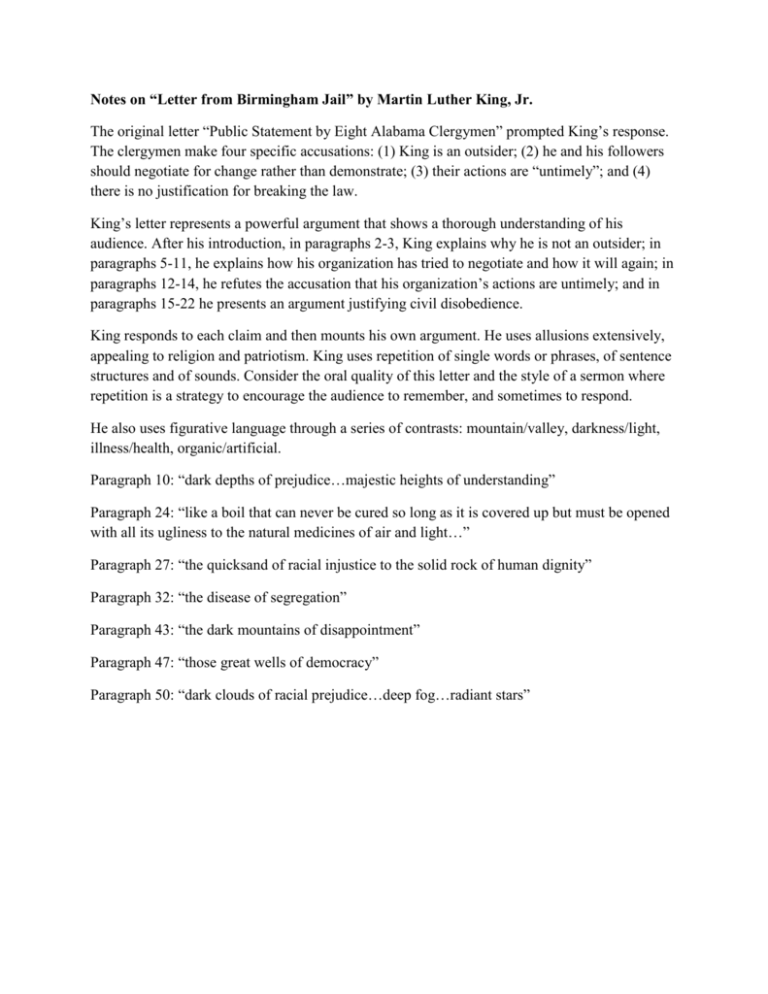
Notes on “Letter from Birmingham Jail” by Martin Luther King, Jr. The original letter “Public Statement by Eight Alabama Clergymen” prompted King’s response. The clergymen make four specific accusations: (1) King is an outsider; (2) he and his followers should negotiate for change rather than demonstrate; (3) their actions are “untimely”; and (4) there is no justification for breaking the law. King’s letter represents a powerful argument that shows a thorough understanding of his audience. After his introduction, in paragraphs 2-3, King explains why he is not an outsider; in paragraphs 5-11, he explains how his organization has tried to negotiate and how it will again; in paragraphs 12-14, he refutes the accusation that his organization’s actions are untimely; and in paragraphs 15-22 he presents an argument justifying civil disobedience. King responds to each claim and then mounts his own argument. He uses allusions extensively, appealing to religion and patriotism. King uses repetition of single words or phrases, of sentence structures and of sounds. Consider the oral quality of this letter and the style of a sermon where repetition is a strategy to encourage the audience to remember, and sometimes to respond. He also uses figurative language through a series of contrasts: mountain/valley, darkness/light, illness/health, organic/artificial. Paragraph 10: “dark depths of prejudice…majestic heights of understanding” Paragraph 24: “like a boil that can never be cured so long as it is covered up but must be opened with all its ugliness to the natural medicines of air and light…” Paragraph 27: “the quicksand of racial injustice to the solid rock of human dignity” Paragraph 32: “the disease of segregation” Paragraph 43: “the dark mountains of disappointment” Paragraph 47: “those great wells of democracy” Paragraph 50: “dark clouds of racial prejudice…deep fog…radiant stars”

